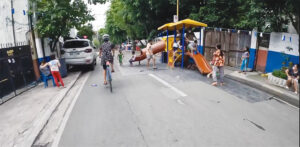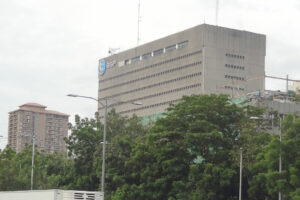Make Manila livable

I was born and raised in Metro Manila. If Cebu is known for its Sinulog Festival and Davao is known for its fruits, Manila is known all over the world for its bumper-to-bumper traffic (Yu 2024). Although my family lived in different cities as I was growing up, we eventually settled in the little triangle east of Manila enclosed by the rivers Pasig, Marikina, the Taytay floodway, and Laguna Lake. Here, bridges and riverbanks come alive with the laughter of children when the sun is low. When the sun is high, old trees provide shade for resting Grab drivers and busy street vendors. Narrow creeks are flanked by people-sized walkways; where there are streets instead of creeks, children’s games take up both lanes. In this small triangle east of Metro Manila, the streets are not just livable, they are alive.
It’s no small wonder therefore that Pasig City pioneered People’s Streets — non-critical streets that are closed to traffic every Sunday. The people, mostly children, made it so de facto, such that the government had no choice but to follow de jure. So, when Ramon Ang proposed to build an expressway above the Pasig River in the name of easing traffic, I joined the ranks of young people who strongly opposed it. We would sooner have parks along the Pasig River than a looming outcrop of concrete that we would never be able to see above. While Cheonggyecheon in Seoul taught us that we can tear down an expressway to revive a river, the Pasig teaches us that we don’t have to build one in the first place. Pasig City also teaches us that children can take up entire streets if they want to.
TO MAKE A CITY LIVABLE MEANS TO DESIGN IT FOR CHILDREN.It isn’t impossible, you know. Amsterdam’s residents weren’t always whizzing around on bicycles. In the 1970s, it took blockades of people lying on the street to lobby for the Amsterdam we know today. But did you know that these protests were not for the sake of bike riders but rather for the safety of children on the road? Known as the “Stop de Kindermoord” or “Stop Killing Children” movement, it was a reaction to the growing number of children who died each year due to motor vehicle accidents. Our good mayors of Metro Manila went to Amsterdam last year to study its world-class transportation system. They must have learned that to make world-class roads means giving those roads back to children and keeping cars as far away from them as possible.
Besides Amsterdam, the Global Designing Cities Initiative (GDCI) documented the transformation of public spaces in different cities in the world. In case studies, the roads in front of the schools look just like any other road in Metro Manila today. But simply by protecting the sidewalks and painting the space to make it look more like a school, the Justin Kabwe Primary School in Zambia, for example, was able to reduce average vehicle speed in the area by half, which resulted in the reduction of serious injuries to children by 26% in just six months.
Also, it turns out that when we design a city for children and their caregivers, it becomes a lot more livable for the rest of us. That means build, build, building away from cars and allowing children as small as 95 cm (3’ 11”) freedom of movement and places to rest and socialize. Not surprisingly, it’s a lot cheaper too — for example, building a protected bike lane instead of a new road can save the government P26.79 million per kilometer (AltMobility 2022) and would better protect the 290,000 bike commuting children in Metro Manila (Social Weather Station 2022).
TO DESIGN A CITY FOR CHILDREN MEANS TREATING CARS AS THE LAST RESORT FOR MOBILITY.My husband and I weren’t planning to bike to our wedding. At first, we chose a venue accessible by bike and public transport for our guests’ sake. I’ve been to too many weddings where I could only attend via carpooling with strangers, and we wanted our guests to be free to come and go as they pleased. However, our car was “coding” on the day of the wedding. Fortunately, my husband and I had been bike commuters for longer than we’d been together, so it was natural for us to default to the saddle of our bicycles. After all, the venue we chose was surrounded by the few bike lanes that still existed in “post-pandemic” Metro Manila.
By now, you may have guessed that our little life has always been free from cars. We traveled a lot, which meant our romance was not incubated in the quiet intimacy of a car. We found intimacy instead in trains and buses, even as we were shoulder to knee with other people. Traveling made us realize that all roads lead to Cubao — accessible via public transportation from anywhere in the Philippines — so we eventually decided to build a home here. And although we recently became car owners, we still bike to work and ride the jeep on date nights.
For the wedding, we had our photos taken on one of those Pasig River bridges. Our photographer had us ride our bicycles up and down several times. Although we tried, we could never be alone; in every shot, there were people walking on the road or basking in the golden hour. Just so.
If ever we’re blessed with children, I want them to know that our dream of a livable Manila is one that was built for them.
Tara Abrina is a monitoring and evaluation consultant for the Action for Economic Reforms, an environmental economics researcher with the University of the Philippines, and a bike commuter based in Metro Manila.




